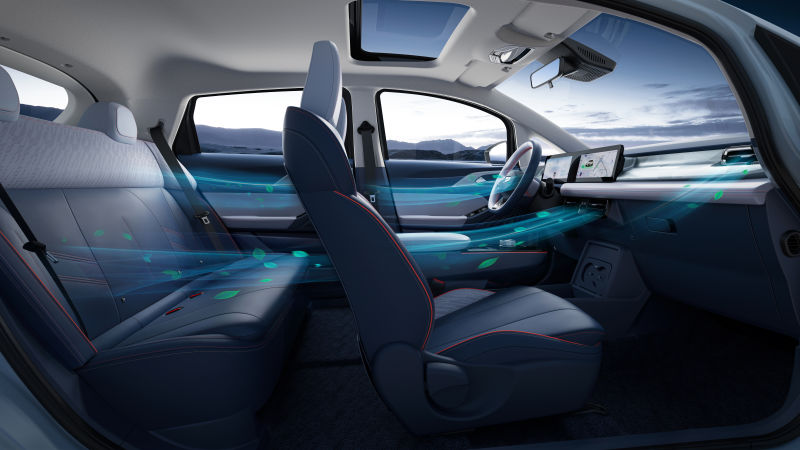Author: Su Qin
Many consumers repeatedly stress the importance of “safety” when choosing new energy vehicles. However, their definition of safety mostly reflects on the rigidity of the vehicle body, and even the batteries, but disregards the material used in the car interior. Little do they know that it affects both the safety of human health and the effectiveness of reducing vehicle damage in the event of a fire. In fact, these issues are closely related to the flame-retardant properties of the car interior materials.
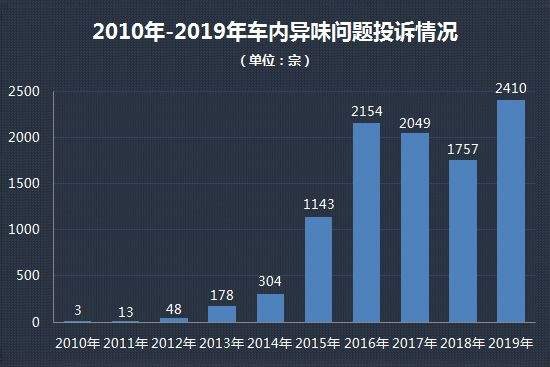
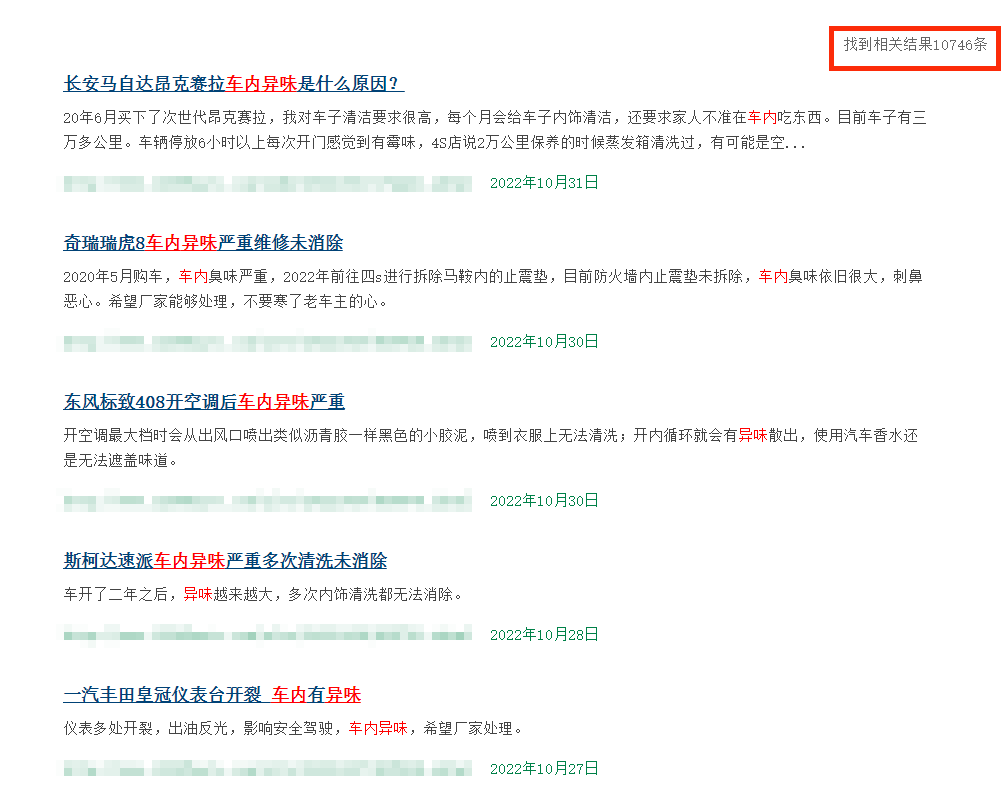
We have noticed on platforms such as China.com and Quality Auto Network that the use of unqualified materials in the car interior and unpleasant odors have become areas of frequent complaints from users. These issues are not due to negligence from car companies but rather are influenced by factors such as price, technology, configuration, and the lack of unified standards for recycled materials, resulting in an endless cycle of problems.
Although some automobile brands have done an outstanding job in ensuring safety and environmental protection in the interior, such as luxury brand Volvo, their prices may not be affordable for all working-class people. So, is there an economical, practical, and healthy new energy automobile brand?
Of course, there is. A brand under the same umbrella as Volvo: the Geely brand, Geometry. The health and safety of the Geometry E model are well-protected. Let’s take a closer look at the composition of interior raw materials, the occurrence of risks, national standards, production processes, and so on.
Healthy Air: CN95 air conditioning filter
Some cars have unpleasant odors that may cause headaches, dry cough, allergies, and other discomforts for passengers. Therefore, eliminating the unpleasant odor in the car interior is one of the primary issues to address.

The solution that Geometry E provides is the CN95 air conditioning filter.
The CN95 air conditioning filter meets the “CATARC CN95” certification standard that the China Automotive Technology & Research Center (CATARC) issued specifically for automotive cabin safety, achieving the highest level of particle filtration efficiency standard “N95” protection effect.The CN95 air conditioning filter consists of three parts: PP spunbond nonwovens, PP filtering layer, and PE skeleton. The filtration efficiency of particles with a diameter greater than or equal to 0.3 μm reaches over 95%, which can effectively isolate external pollutants such as dust, bacteria, viruses, allergens, and even PM2.5 particles in the air and even have an effective isolation effect on the novel coronavirus.
Full-Scene Air Renewal
Some passengers have respiratory problems such as asthma and rhinitis. Faced with consumers with these problems, most car manufacturers choose to ignore them, but Geometry has always been silently concerned about the respiratory health of the occupants.

Geometry E is equipped with a full-scene cabin air renewal system. When the entire vehicle is powered off, after unlocking with the key, the active cabin can be cleaned, and the automatic ventilation function can be turned on. When the vehicle is powered off and the doors are locked, after a certain amount of time, Geometry E can delay the ventilation to keep the air duct dry and avoid mildew. When the vehicle is under high voltage and the doors are locked, Geometry E can time the ventilation/air exchange to replace the air inside the car.
Antibacterial Steering Wheel
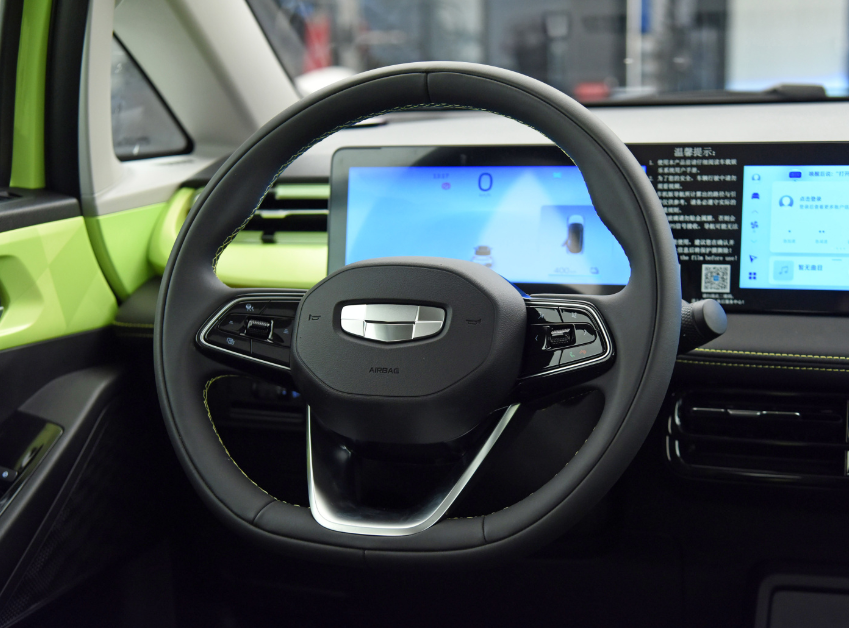
In order to allow users to “hold” health, Geometry E uses ultra-fine leather antibacterial material for the steering wheel. The antibacterial agent is injected into the leather of the steering wheel through physical processes, achieving a 99% antibacterial effect, safe and pollution-free, and having no side effects on the human body. It effectively inhibits bacteria and avoids cross infections.
It’s worth mentioning that the antibacterial property of the steering wheel has also been certified by the Guangdong Provincial Microbiology Research Institute.
Low Volatile Organic Compounds (VOC) Interior
Some car interiors have certain safety hazards due to poor quality or improper maintenance after aging.
For example, organic compounds that can be volatilized at room temperature include alkanes, aromatics, esters, aldehydes, etc. At the same time, the adhesive used in automotive interiors, such as textiles, leather, plastic parts, and rubber, has a possibility of producing volatile organic compounds due to the sticky nature of the adhesive. Among them, toluene and formaldehyde in VOCs have a significant harm to human health, especially for groups such as children and pregnant women, which even pose a greater threat to their lives.

Adhering to the concept of environmental protection and following the national standard for volatile organic compounds (VOCs), the interior of the Geometry E uses eco-friendly materials.
For example, the Geometry E’s seats are made of PVC (polyvinyl chloride) material; the dust cover of the seat uses a non-woven fabric with holes; the commonly used composite sponge has been upgraded from oil composite to flame composite; and the door panels are made of low-odor and environmentally friendly plastics. All of these upgrades are made to effectively decrease the irritating odors in the car.
Seats: Technology Leather and Safe Fabric
The highlights of the Geometry E’s seats mainly lie in two aspects:
Firstly, it uses technology leather that allows for no washing. The seats, door panels, center armrest, and dashboard decorative panels all use such technology leather. This material can prevent stain, fuel and other things from transferring to the substrate, providing protection. Its quality is higher than the commonly used injection molding material and is easier to clean and long-lasting, with a strong anti-aging performance.
In particular, the light-colored leather in the Geometry E uses the third-generation self-cleaning product, or a third-generation paint. Due to the addition of special raw materials, it performs well in both self-cleaning and coffee resistance tests.
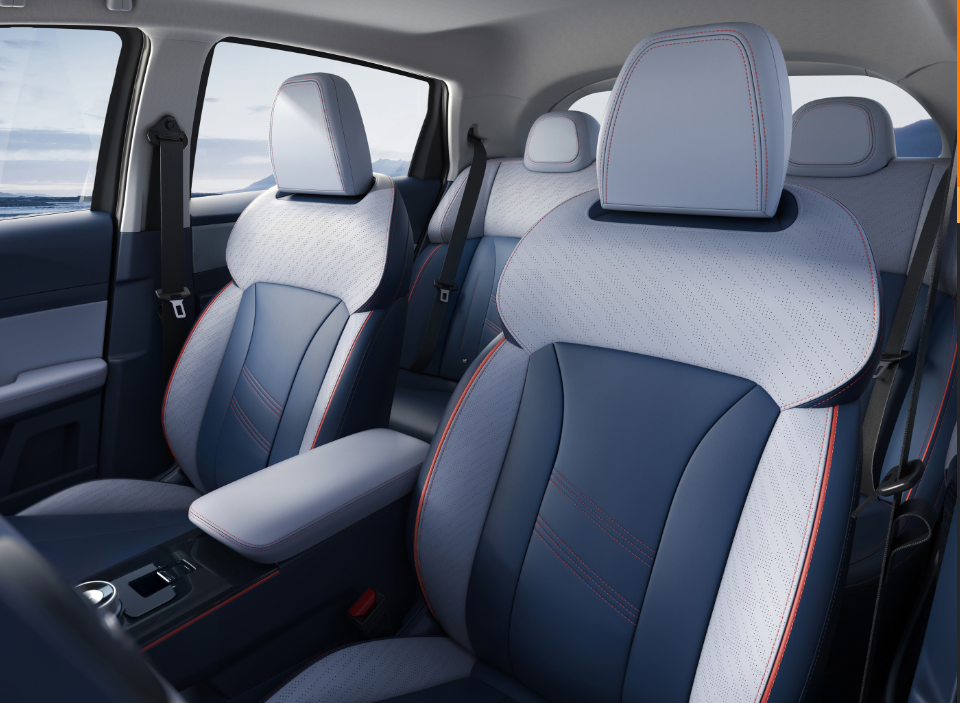
Secondly, safe fabric. The Geometry E has passed the high-standard CEC ecological textile testing.
During the testing process, the organic materials of the Geometry E are fully tested, meeting the strict limit requirements of prohibited substances, polycyclic aromatic hydrocarbons, harmful dyes, organic heavy metals, etc. It also passes the tests for azo dyes, allergenic dyes, and carcinogenic dyes, and proves to be nontoxic and has low allergies, which meets five-star rating requirements. It goes through 28 hazardous substances tests — which is higher than the international standards of 21 hazardous substances tests.
Actually, Geometry E took far more factors into account.
As we know, compared to adults, babies have lower immunity and higher perceptibility. The standards that adults follow are not applicable to babies. If quality is not up to standard, it could cause fatal injury to the babies. Therefore, Geometry E’s rubber materials are environmentally friendly and low-odor, and all plastic materials are made of virgin materials, rather than recycled materials. Moreover, the baby clothes-level interior materials used have been tested, and some test standards even exceed the OEKO-TAX international standard.### Finally:
Seeing this, some consumers may find it hard to believe that the Geometry E, priced at only 86,800-103,800 yuan, has achieved such perfection in terms of health and environmental protection. After all, “you get what you pay for”, so does Geometry not consider cost issues?
In fact, this can be concluded from the sustainable development of Geometry’s entire life cycle.
From the perspective of interior material supply, if we want to achieve sustainable development from an environmental perspective, we have to consider factors such as the environment, economy, and society. For example, every 1kg of PET material is equivalent to 67 0.5L PET bottles. The PET on a single vehicle accounts for about 5kg, which is equivalent to recycling 335 PET plastic bottles. At least 3.35 million plastic bottles can be reduced every year, forming a material cycle, and the cost can be reduced by 1-5% based on the raw material. Over time, every kilogram of recycled PET reduces carbon emissions by 1.72kgCO2 compared to virgin PET, which is equivalent to reducing 8.6kgCO2 per vehicle. At least 86tCO2 emissions can be reduced every year, tackling environmental problems from the root.
Based on this, the Geometry E has considered both cost and environmental sustainability from the manufacturing end, supply end, and usage end, which means from waste plastics – PET raw materials – parts – the whole car. As a result, the full life cycle carbon emissions have decreased by 39.2% compared to the AO-grade models and lead the same-grade models.
As a side note, our recognition and attention to interior design determines the designer’s focus on designing and improving each aspect of the interior. Details determine the overall coordination and grade of interior design, but health and safety are equally important. Whether it’s a sincere environmental design concept or the leading baby-level safety material, they are the confidence of new energy vehicles facing extremely rigorous health tests by CATARC.
This time, we saw that the Geometry E’s full-scene cockpit and rich configurations just showcase its high cost-performance advantages, especially when considering special physical problems for specific groups even in the meticulous seat fabrics.
So, when we are in an economic depression and can’t afford a Volvo for health and safety reasons, choosing the Geometry E is also an excellent choice!
This article is a translation by ChatGPT of a Chinese report from 42HOW. If you have any questions about it, please email bd@42how.com.
